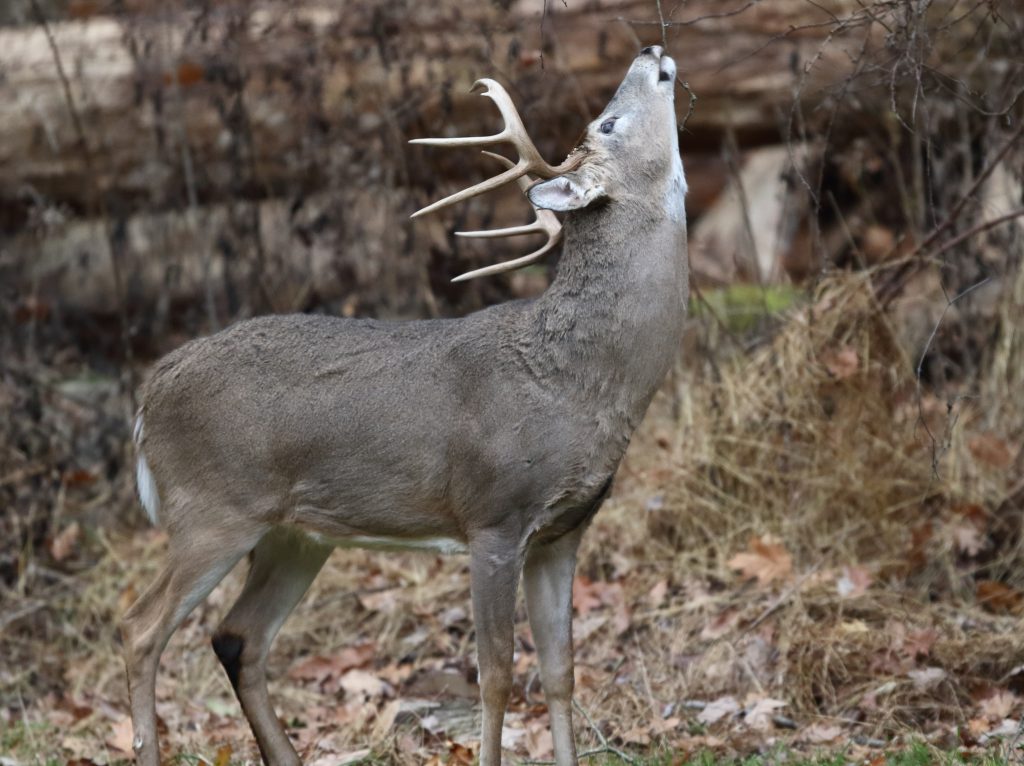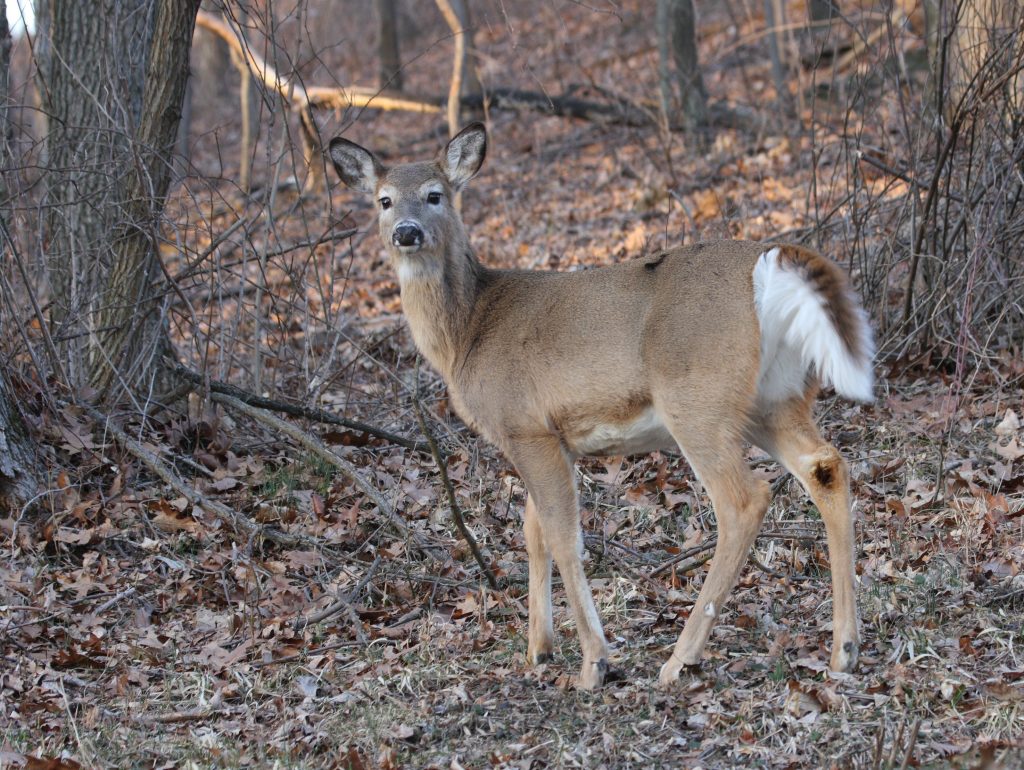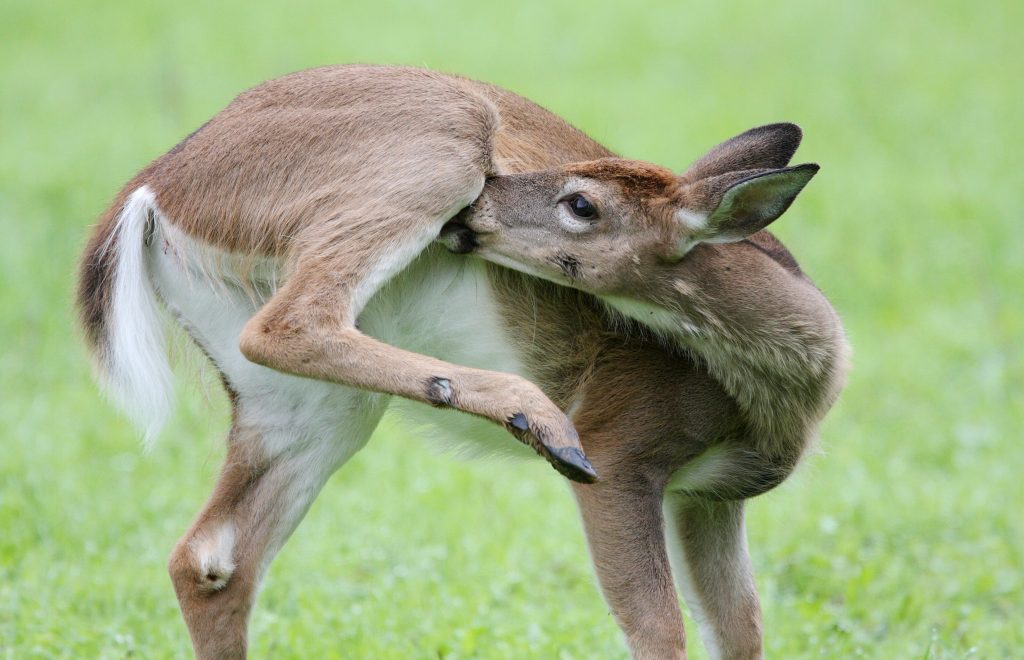While approaching traps, I could sometimes tell we had been successful before the trap even came into view. It wasn’t some crazy deer-telepathy, or a special Spidey Sense, but a whiff of that distinctive scent on the breeze. For particularly smelly deer, the scent emanating from the trap almost always indicated a buck. So, what is the origin of this smell? And what social implications does this “cologne” have for bucks?
First, some background information. Deer have many glands. Arguably the most important ones for a hunter to study and understand are the tarsal glands. Much of the odor that we associate with deer is produced by the tarsal glands, located behind a dark patch of fur on the inside of the deer’s hind legs. A behavior that contributes to the strong deer aroma is rub-urination.

Rub-urination is exactly what it sounds like. A deer will urinate over its tarsal glands while rubbing them together. The dark coloration of the fur on top of the glands is an effect of the frequent urination. The tarsal glands produce a fatty substance that attaches to the hair. Fat-soluble compounds from the urine remain on the hair. The smell produced from rub-urination comes from a combination of bacteria attracted to the moist warm environment, the fatty glandular secretions, and possible hormones in the urine. All deer rub-urinate, but the purpose and frequency differ based on the sex and age of the deer and the time of year. Adult bucks tend to rub-urinate more frequently than does and fawns, especially during the rutting season.

For males, scent is extremely important during the rut. It has been suggested by researchers that bucks rub-urinate to attract does and to show dominance. The odor produced by rub-urination contains a lot of pieces of information. Scientists have conjectured that the scents contain individual identification, reproductive status, and social standing information.
For all deer, the scent produced at the tarsal glands can serve as a basic identifier between individuals. Each deer scent is unique and deer have amazing olfactory abilities allowing them to detect it. While roaming around the woods, deer can keep track of the movements of other deer by picking up their scent on the breeze, on vegetation along the deer’s path, or in scrapes. It has even been suggested that deer may lick the tarsal area after rub-urinating and then lick trees in order to transfer the scent to their surroundings.

Researchers from the University of Georgia compared the bacteria of the tarsal region to bacteria found in areas with no glands and no urine contamination. Many more species of bacteria exist at the tarsal areas with many of these bacteria only found at the tarsal areas. The bacteria found was of the odor-producing variety, and males had higher concentrations than females. They also found a species of bacteria known to convert steroids to odorous substances. Their conclusion was that the tarsal glands are indeed hotspots for odor production. The presence of the steroid converting bacteria suggests that steroids may be present in deer urine contributing to the overall scent of the deer and may contain reproductive and social information.
At a molecular level, scientists have also studied the chemical composition of urine in dominant and subordinate white-tailed bucks. Differences in the composition included higher or lower concentrations of certain components based on the social status. There were also some components that existed exclusively in one group or the other. Concentration and presence of certain components is also specific to the season (breeding vs. nonbreeding). These differences in urine composition may contribute to differences in the odor produced by rub-urination. Thereby communicating reproductive and social status through scent.
A lot of research has been conducted on deer-scent and communication, but there are still many questions pertaining to such behavior. This leaves the door open to many anecdotes and wive’s tales. For instance, it is said that an older, more dominant buck may have darker tarsal fur due to a higher frequency of rub-urination. It has also been suggested that less dominant bucks may even lick their tarsal glands to reduce scent to avoid a confrontation with a more dominant buck.
One thing is for certain, cologne is a must-have for bucks regardless of brand.
-Carolyn Degurski
Field Crew Leader
PGC Deer and Elk Section